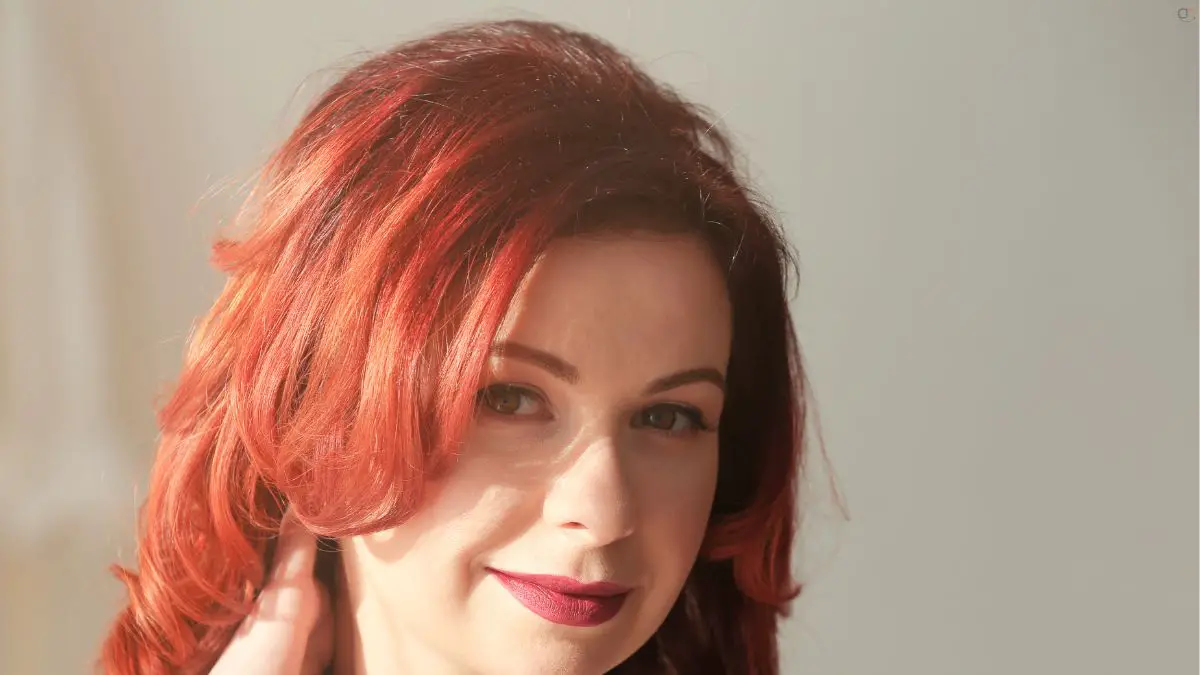I dyed my hair and now my scalp is peeling?
There’s something thrilling about dyeing your hair. It’s a fresh start, a burst of self-expression, or just a fun way to switch things up. I recently decided to take the plunge and transform my look with a bold new hair color.
The excitement was real—until it wasn’t. What started as a journey to vibrant locks quickly turned into an unexpected nightmare: my scalp started peeling.
If you’ve ever gone through a similar experience, you know how alarming it can be.
Was it the dye? The chemicals? Or maybe something in my hair care routine?
Get dealing with post-dye issues, stick around—I’ve got some lessons (and laughs) to share!
What Happened?
It all started with excitement—I decided to dye my hair a bold new color for a fresh look. I chose an at-home dye kit, thinking it would be a straightforward process.
I carefully followed the instructions, applied the dye, and waited for the transformation. At first, everything seemed fine—my hair looked amazing, and I was thrilled with the result.
But a day later, I noticed my scalp felt tight and itchy. By the second day, I saw flakes of peeling skin.
Alarmed, I wondered if I had left the dye on too long, skipped a patch test, or used a product too harsh for my skin.
What should’ve been a fun makeover turned into a concerning issue I couldn’t ignore.
Possible Causes:
When I dyed my hair, my scalp started peeling a few days later, and I realized there could be several reasons. For me, it was likely the harsh chemicals in the dye, as I’d skipped the patch test.
My scalp felt itchy, and I noticed some redness, suggesting a mild allergic reaction. I also left the dye on slightly longer than recommended, which probably contributed to the irritation.
Using a strong shampoo right after might have stripped my scalp’s natural oils, making the peeling worse. It was a lesson to always follow instructions carefully and prioritize gentle aftercare for my scalp.
I dyed my hair and now my scalp is peeling | Necessary Steps:
When I dyed my hair and noticed my scalp peeling afterward, I realized I needed to take some thoughtful steps to address the issue. Here’s what I did and learned through the process:
1. Rinse Thoroughly
Right after I noticed the peeling, I rinsed my hair with lukewarm water to remove any dye residue that might still be causing irritation. I avoided hot water, as it tends to worsen dryness and irritation. Rinsing gently helped soothe my scalp while ensuring no leftover chemicals stayed on my skin.
2. Switch to a Gentle Shampoo
I replaced my usual shampoo with a sulfate-free, hypoallergenic one. My regular shampoo had harsh ingredients that felt too drying, so switching made a big difference. I made sure to lather gently and focus on cleaning without aggravating the peeling areas further.
3. Apply a Soothing Treatment
After washing, I applied pure aloe vera gel to my scalp. I had read that aloe vera helps with irritation and dryness, and it truly did provide relief. I kept the application light and avoided rubbing too hard. On particularly itchy days, I also tried a few drops of coconut oil, which helped moisturize the dry patches.
4. Avoid Scratching or Picking
It was so tempting to scratch the flaky areas, but I knew it could lead to infections or worse irritation. Instead, I gently massaged my scalp with my fingertips to relieve any itchiness without damaging the skin.
5. Skip Styling Products and Heat
During this time, I completely avoided styling products like hairspray, gel, or mousse. I also took a break from heat styling tools like my blow dryer and flat iron. Letting my hair air-dry naturally was better for my scalp while it healed.
6. Stay Hydrated and Use Natural Fabrics
Drinking more water and wearing a breathable fabric like cotton while sleeping helped, as my scalp felt less irritated overall.
7. Consult a Professional
When the peeling didn’t improve after a week, I reached out to a dermatologist who confirmed it was a mild chemical reaction. They recommended over-the-counter hydrocortisone cream, which worked wonders. They also emphasized the importance of a patch test before any future dye jobs.
Through this experience, I learned the importance of being cautious with hair dyes. Following instructions, using quality products, and taking immediate action for any reactions can make a huge difference.
How to Prevent Scalp Issues in the Future:
After my experience with scalp irritation from hair dye, I’ve learned a lot about how to prevent issues in the future. The first step I take now is always patch testing 48 hours before dyeing, even though it feels like an extra step. I once skipped this, and it led to irritation, so I never take that risk anymore.
I also opt for gentle, ammonia-free dyes, which I found much less harsh on my skin. Before dyeing, I now make sure to hydrate my scalp with a natural oil, like coconut oil, to create a protective barrier.
I’ve learned the importance of not over-dyeing my hair too frequently—giving my scalp time to recover. I follow the instructions carefully, especially when it comes to application time, to avoid any burn or irritation.
After dyeing, I use sulfate-free, moisturizing products to keep my scalp healthy, and I make sure to avoid heat styling for a while. These steps have kept my scalp happy and irritation-free.
Take Away:
- If you’ve dyed your hair and noticed your scalp peeling, it’s likely due to irritation from the dye or an allergic reaction.
- I’ve been through this myself and discovered that washing your hair with gentle products, using soothing treatments like aloe vera, and avoiding heat styling can help calm the scalp.
- It’s important to resist scratching and to give your scalp time to heal. If the problem persists, seeking advice from a dermatologist or hairstylist is key.
Call to Action:
- If you’re dealing with a peeling scalp after dyeing, don’t wait! Take the steps outlined in this post to alleviate the discomfort.
- Remember, always patch test before dyeing, and seek professional help if needed to keep your scalp healthy and your hair looking its best, and join us.
Read Next: Will Vitamin C Remove Hair Dye
FAQs | i dyed my hair and now my scalp is peeling
Q. Why is my scalp peeling after I dyed my hair?
Peeling can occur due to an allergic reaction to the chemicals in the dye, irritation, or dryness from the dyeing process.
Q. How can I soothe my peeling scalp?
Use gentle, sulfate-free shampoos, apply aloe vera or coconut oil, and avoid scratching. A cool rinse can also help relieve irritation.
Q. Is peeling a sign of a serious reaction?
Not necessarily. Minor irritation is common, but if the peeling persists or worsens, consult a dermatologist to rule out more serious reactions.
Q. How can I prevent scalp irritation in the future?
Always patch-test hair dye, choose gentle, ammonia-free products, and moisturize your scalp before dyeing to minimize irritation.
Q. Should I wash my hair if my scalp is peeling?
Yes, but use a mild, moisturizing shampoo and avoid hot water, as it can worsen dryness and irritation.
Q. When should I seek professional help?
If the peeling doesn’t improve after a few days, or if you experience intense redness, swelling, or pain, it’s best to consult a dermatologist.



